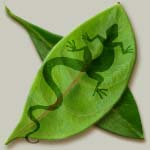The Geographies of the Black Henna Meme Organism and the Epidemic of Para-phenylenediamine Sensitization: A Qualitative History
Catherine Cartwright-Jones PhD Dissertation
Geography Department, Kent State University 2015
email: reverndbunny@earthlink.net
ABSTRACT
This qualitative history investigates the problem of the global epidemic of para-phenylenediamine sensitization through the epidemiology of the black henna meme organism. ‘Black henna’ contains para-phenylenediamine oxidative dye, a highly sensitizing chemical which produces delayed hypersensitivity reactions on the skin. ‘Black henna’ body art evolved from traditional henna body art when artists began to add para-phenylenediamine to traditional henna body art because the chemical dye produced a faster, more efficient, darker stain. This chemical addition caused blistering, scarring in the area of the pattern, with a reaction appearing five to twenty days after application in about 15% to 50% of the subjects.
A maximization test of 10% para-phenylenediamine paste to skin causes sensitization in 100% of subjects in five or fewer applications. All tested ‘black henna’ pastes have higher concentrations of para-phenylenediamine, from 12% to 80%, and all ‘black henna’ temporary tattoo applications are larger than a patch test.
The connection between the body art and onset of the reaction was not well understood by patrons, and often not seen by the artists. The latent severe chemical sensitivities caused by these applications often remained invisible for years. The ‘black henna’ temporary tattoo became a popular souvenir of exotic destinations and local celebratory cosmetic, as well as a profitable informal economic venture for the artist; the understanding of the risks did not proliferate along with the ‘black henna’ meme.
The ‘black henna’ meme replicated from local practice into global cultural geographies through pop culture, tourism, and the Internet. Online and print media commentary about ‘black henna’ began around 1997, at which point the replication and evolution of the black henna meme organism became visible and recoverable, so the epidemiology of the ‘black henna’ meme can be recovered to trace the epidemiology of para-phenylenediamine sensitization.
This work analyzes the history, geography and cultural phenomenon of black henna meme organisms in the tourist industry through memetics and discourse analysis of online commentary on ‘black henna’ and the para-phenylenediamine sensitization epidemic produced by ‘black henna’ between 1997 to 2014. This work will also estimate the date of onset and size of the sensitization epidemic, and propose a solution of management through competing meme organisms.
For full-page display of the article, click the gear icon in the upper right-hand corner to open the settings menu, then click “Presentation Mode.” To save a copy of the article, click “Download” on the settings menu.
You can view and download in .doc format HERE.
Use the above version for research and academic citation:
includes complete bibliography and correct pagination.
Citation:
Cartwright-Jones, C. The Geographies of the Black Henna Meme Organism and the Epidemic of Para-phenylenediamine Sensitization: A Qualitative History. PhD dissertation. 2015. Kent State University, Kent, Ohio. Accession Number: kent1425412566
The Geographies of the Black Henna Meme Organism and the Epidemic of Para-phenylenediamine Sensitization: A Qualitative History – expanded and illustrated chapters
Read these expanded and illustrated individual chapters for further detail and discussion.
Click on links below to view chapter contents and view in .doc format
Chapter II: Cultural Geography, the Ideosphere, and Henna
Chapter IV: A Qualitative History of the Epidemiologies of Meme Organisms
Chapter V: Discussion of Results and Visualized Information

